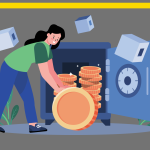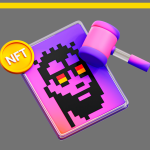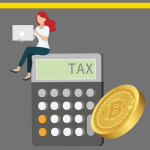Cryptocurrencies are known for their rollercoaster-like volatility. One day they’re up, and the next, they’re down. Enter stablecoins—the “calm amidst the storm” of the crypto world. But what exactly is a stablecoin, and why are they considered the most stable cryptocurrencies? Let’s dive into the fascinating world of stablecoins and see why they’ve become a cornerstone in the evolving landscape of digital finance.
What is a Stablecoin?
Defining Stablecoins and Their Purpose
So, what is a stablecoin? In simple terms, a stablecoin is a type of cryptocurrency designed to maintain a stable value. Unlike Bitcoin or Ethereum, which can see significant price swings, stablecoins aim to keep their value steady, usually by being pegged to a stable asset like the US dollar or gold. The main goal? To offer the best of both worlds—the benefits of cryptocurrency (like fast transactions and global reach) without the gut-wrenching volatility.
The Concept of Stability
Why does stability matter so much in the crypto world? Imagine trying to use a currency that could lose 30% of its value overnight. Not very practical, right? Stability is crucial for any medium of exchange, store of value, or unit of account—basic qualities we expect from money. Stablecoins solve this problem by anchoring their value to something more predictable.
Types of Stablecoins
Not all stablecoins are created equal. They generally fall into three categories:
- Fiat-Backed Stablecoins: These are backed by reserves of a fiat currency, like the US dollar.
- Crypto-Backed Stablecoins: These use other cryptocurrencies as collateral.
- Algorithmic Stablecoins: These rely on algorithms to maintain their value, adjusting supply based on market conditions.
How Do Stablecoins Work?
Pegging to Assets
Stablecoins maintain their value by being pegged to an asset. For example, a fiat-backed stablecoin like Tether (USDT) is backed by actual dollars in a bank. This means, theoretically, every Tether in circulation is redeemable for one US dollar, which helps to keep its price stable.
Smart Contracts and Algorithms
Then there are algorithmic stablecoins, which don’t rely on traditional reserves. Instead, they use smart contracts and complex algorithms to manage the supply and demand of the coin, thus maintaining a stable value. It’s like having a self-regulating financial machine that keeps the currency’s value in check.
Different Types of Stablecoins Explained
Fiat-Backed Stablecoins
Fiat-backed stablecoins, such as Tether (USDT) and USD Coin (USDC), are the most common type. These coins are pegged to a fiat currency, usually the US dollar, and are backed by reserves held in a bank. They offer a simple and transparent model—every coin is backed by a real-world asset.
Crypto-Backed Stablecoins
Crypto-backed stablecoins, like Dai (DAI), are a bit more complicated. Instead of being backed by fiat, they’re backed by other cryptocurrencies. This might sound counterintuitive, given how volatile cryptocurrencies are, but these coins often use over-collateralization (holding more assets than the value of the coins issued) to maintain stability.
Algorithmic Stablecoins
Algorithmic stablecoins, like TerraUSD (UST), don’t have any underlying collateral. Instead, they use algorithms and smart contracts to balance supply and demand, aiming to keep the price stable. While innovative, they come with their own set of risks, mainly because they rely heavily on market confidence and complex code.
The Advantages of Using Stablecoins
Reduced Volatility
Stablecoins offer a stable value, making them a preferred choice for those who want to use digital currency for everyday transactions or as a safe harbor during market turbulence. You won’t see wild price swings, which means fewer headaches and more predictability.
Efficient Transactions
One of the biggest advantages of stablecoins is their ability to enable fast, cost-effective transactions. Whether you’re sending money across borders or paying for goods and services, stablecoins offer a quicker and cheaper alternative to traditional banking methods.
Financial Inclusion
Stablecoins also have the potential to bring financial services to the unbanked population. By bypassing traditional banking infrastructure, they provide access to digital financial services for millions around the globe who lack a bank account.
Risks Associated with Stablecoins
Centralization Risks
One of the downsides of fiat-backed stablecoins is centralization. The reserves backing these coins are typically held by a centralized entity, which introduces trust and counterparty risks. If that entity fails or becomes insolvent, the stablecoin could lose its peg.
Regulatory Uncertainty
Governments around the world are still figuring out how to regulate stablecoins. Regulatory changes could impact the operation and use of stablecoins, adding an element of uncertainty to their long-term viability.
Market Risks
Algorithmic stablecoins, in particular, are susceptible to market risks. If the algorithm or smart contract managing the stablecoin fails or is exploited, it could lead to a loss of value. Therefore, understanding these risks is essential for anyone considering using or investing in stablecoins.
Popular Stablecoins to Know
Tether (USDT)
Tether is the oldest and most widely used stablecoin, pegged to the US dollar. It’s commonly used for trading on crypto exchanges and provides liquidity to the market. However, concerns about its reserves and transparency have sparked debate.
USD Coin (USDC)
USDC is another popular stablecoin pegged to the US dollar. Known for its transparency, USDC is backed by fully audited reserves, making it a trusted choice among institutional investors and regular users alike.
Dai (DAI)
Dai is a decentralized stablecoin pegged to the US dollar but backed by other cryptocurrencies. It operates on the Ethereum blockchain and is governed by smart contracts, offering a trustless alternative to fiat-backed stablecoins.
How to Use Stablecoins Effectively
Choosing the Right Stablecoin
When selecting a stablecoin, consider factors like transparency, auditability, and your specific use case. If you’re looking for stability and transparency, USDC might be a better choice. If you’re interested in decentralization, Dai could be worth exploring.
Storing Stablecoins Securely
Store your stablecoins in a reputable wallet, such as a hardware wallet, for long-term security. If you need quick access, a software wallet with two-factor authentication can provide convenience and security.
Conclusion
Stablecoins are an innovative solution to the volatility problem plaguing traditional cryptocurrencies. They offer the stability of fiat money with the advantages of digital assets, making them a vital tool in the crypto ecosystem. Whether you’re an investor, a trader, or just someone looking to dip a toe into digital currencies, understanding stablecoins can help you navigate the crypto waters with confidence.











 Bitcoin
Bitcoin  Ethereum
Ethereum  Tether
Tether  Solana
Solana  USDC
USDC  XRP
XRP  Lido Staked Ether
Lido Staked Ether  Dogecoin
Dogecoin  Toncoin
Toncoin